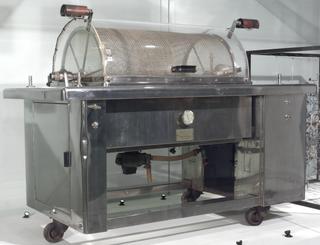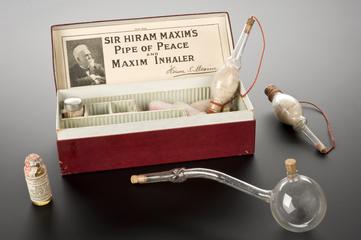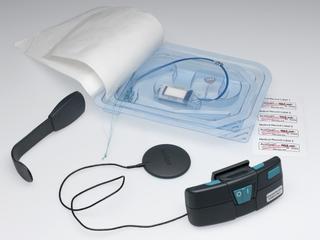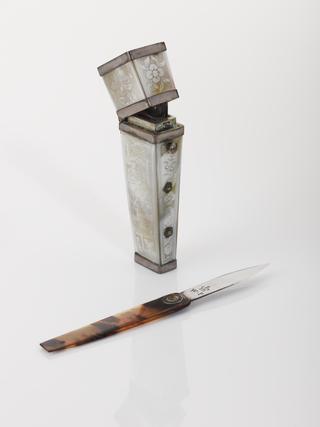




Apparatus for resuscitating the drowned from the Worcestershire Humane Society, 18th century. Directions sewn into the lid. Contains brass wrench, flexible leather tube, short ivory pipe - nostril, curved silver pipe - larynx, elastic gum tube, ivory funnel, 2 other ivory attachments, leather balloon, 3 stopper phials (empty) designed to contain brandy and volatile alkali and other connecting parts.
The Royal Humane Society has long promoted lifesaving and resuscitation techniques. It was founded in 1774 as the ‘Society for the Recovery of Persons Apparently Drowned’. This ‘apparatus for resuscitating the drowned’ is from the Worcestershire branch of the society. It contains an apparatus for forcing air into the lungs via a leather balloon and tubing. It was for both nasal and oral use. Also included are three stopper phials. These contained brandy and volatile alkali, presumably to act as stimulants. This early form of resuscitation must have been administered quickly after ‘drowning’ to be successful.
The society founded several ‘receiving’ houses in port cities. Those pulled from the docks, either because of local shipwreck or accident, were taken there to be seen by a physician. Money was given to members of the public who delivered them. Four guineas were given to the rescuer and one to anyone allowing a person to be treated on their premises. Unscrupulous individuals exploited this and so financial incentives were replaced with certificates and medals. The Royal Humane Society continues to reward bravery and the restoration of life by resuscitation today.
Details
- Category:
- Therapeutics
- Object Number:
- 1984-818
- Materials:
- felt, glass, ivory, metal (unknown), rubber (unidentified), silver (metal) and wood (unidentified)
- Measurements:
-
overall: 80 mm x 250 mm x 140 mm, 1.31kg
- type:
- resuscitator
- credit:
- Phillips, Son and Neale




